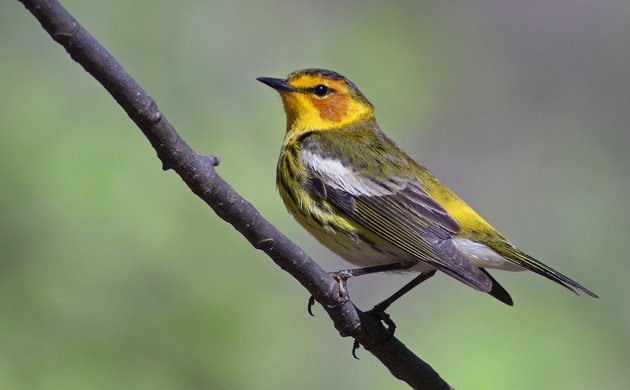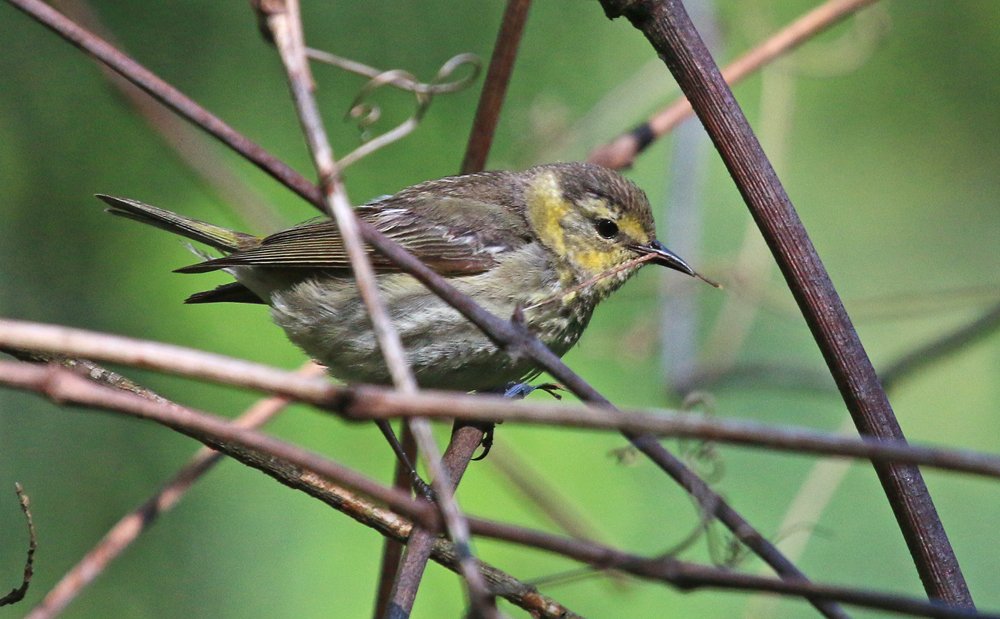
Up until the early 1900s the birding scene was still dominated by the shotgun set. That is, to identify the birds that one could see, one shot them and collected their still-warm carcasses for identification purposes. Some had switched over to using the low-powered optics of the day but this new method of identifying birds hadn’t quite taken hold with the old guard yet. Of course, there was no Peterson Field Guide at the turn of the century (and certainly no Sibley), so one pretty much had to learn the birds in the hand to be able to identify the birds in the tree or the air. One young man, Ludlow Griscom, who became a famous ornithologist, managed to push the birding world from killing to watching, though the most famous story told about this transition may or may not be true. I’ll leave it to Pete Dunne to tell the tale.
One day, Ludlow and the venerable ornithologist stopped at a home in Connecticut to secure permission to shoot whatever manner of birds were migrating through — the accepted ornithological practice at the time. Young Ludlow had the temerity to suggest that he could identify the birds without having to shoot them. To prove his point, he placed his field glasses on a treetop warbler and pronounced it to be a female Cape May Warbler. Skeptical, the ornithologist raised his shotgun and fired. Mirabile dictu, the bird was a female Cape May Warbler. The experiment continued, and Ludlow’s identifications were correct time and time again.
The story may or may not be true. For example, the older ornithologist is never named, just described as a member of the Linnaean Society of New York. And Scott Weidensaul, in Of a Feather, A Brief History of American Birding, indicates that the incident happened in Central Park. Weidensaul also points out that whether or not the incident actually happened doesn’t matter:
True? The story was told by one of Griscom’s own students, so it might well be, but the factuality of it almost doesn’t matter; the story has been told so often because it boils down the emergence of modern birding, with its reliance on the binocular instead of the gun, into a simple parable–the dawn of a new age in a single morning in Central Park, instead of the protracted, messy, far more complex process it actually was, taking more than fifty years.
Whether or not Griscom’s feat of bird identification happened or not he was, again as Weidensaul puts it, “the fulcrum of the shift.” When Roger Tory Peterson moved to New York City and took up with the young turks of the Bronx County Bird Club he, with all of the other teenage birders, idolized Griscom. Indeed, in later years Peterson would write about his mentor:
Griscom became the high priest of the new cult of split-second field identification, and the Bronx boys were his most apt pupils. My field guides owe much to Ludlow; certainly the philosophy and fine points of field recognition I learned from him and my young Linnaean friends…I find that wherever I go throughout the fifty states, the sharpest field experts can usually be traced to Griscom’s influence either directly or indirectly, through some eastern club in New York, Boston, Philadelphia, or Washington, where his influence and that of his disciples was felt most strongly. He was indeed the dean of field ornithologists.
So let us thank Ludlow Griscom for bridging the gaps between the bird shooters and the binocular toters, between the old school and the young turks, between the bad old days and the modern age of birding…and let us also thank the female Cape May Warbler for giving her life so that birding could get past the slaughter and move on to the wonderful hobby (way of life?) that it is now.
female Cape May Warbler
Sources for this post:
- The Feather Quest: A North American Birder’s Year by Pete Dunne
- Of a Feather: A Brief History of American Birding by Scott Weidensaul
- All Things Reconsidered: My Birding Adventures by Roger Tory Peterson, edited by Bill Thompson III














Corey…tremendous post. There’s no thing left to say (at least for me).
Nice job. A terrific, out-of-print book about birding history is “A World of Watchers” by Joseph Kastner. It’s probably similar to Weidensaul’s book which I own but haven’t read yet.